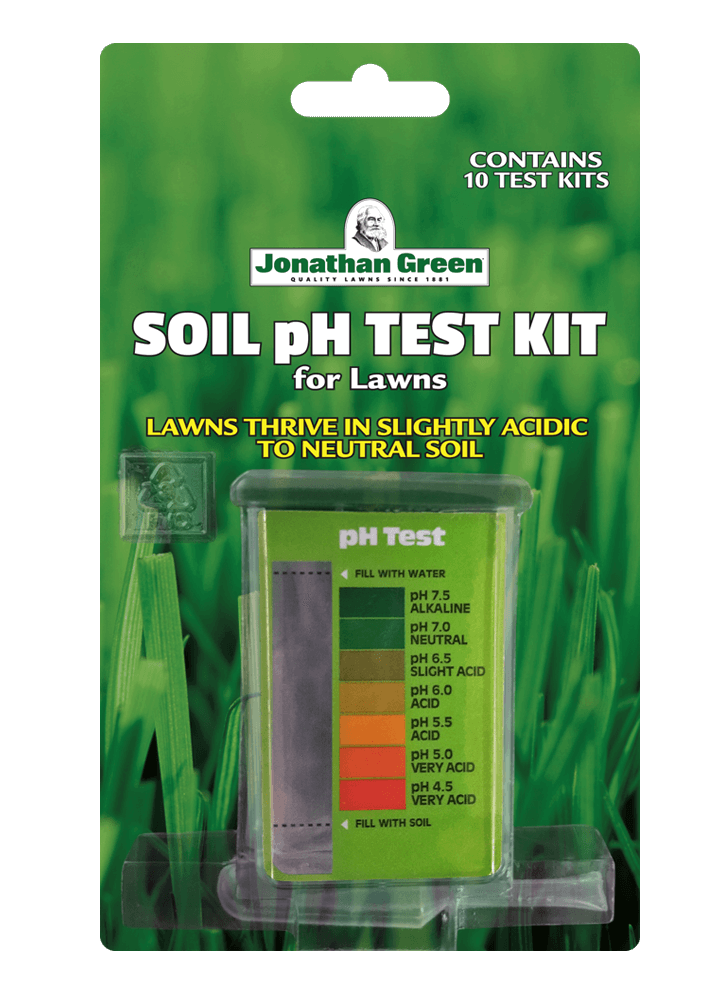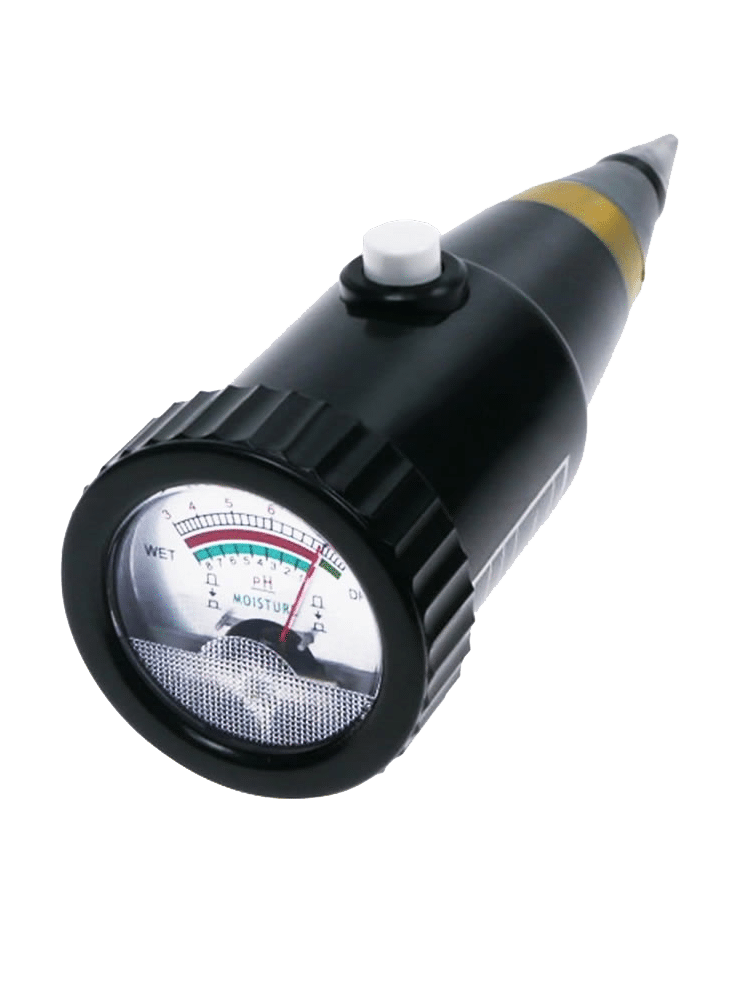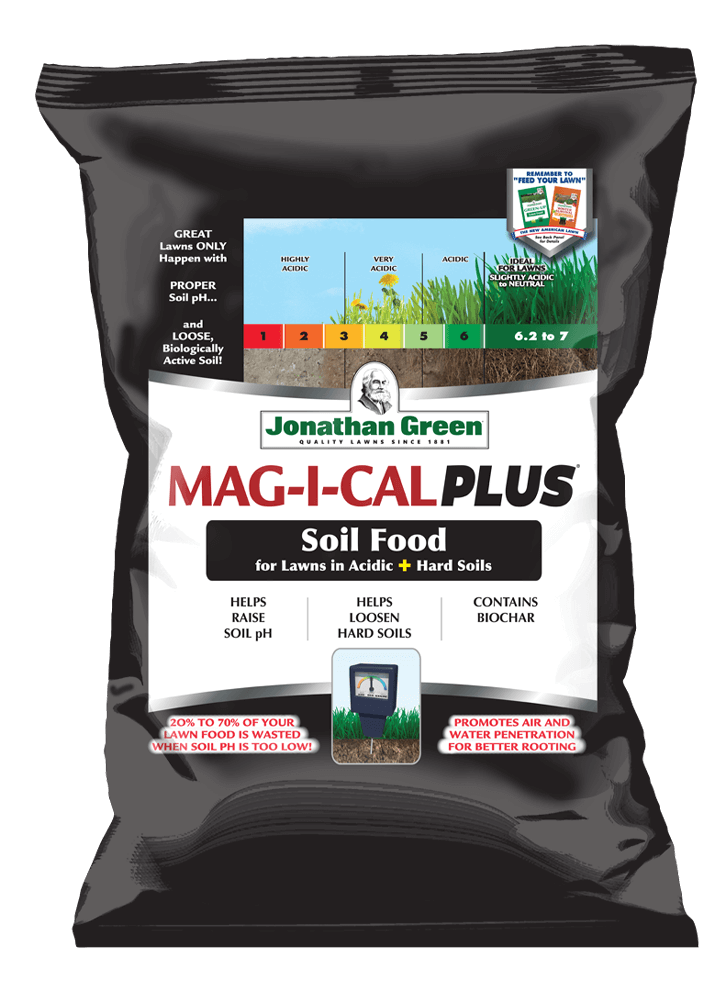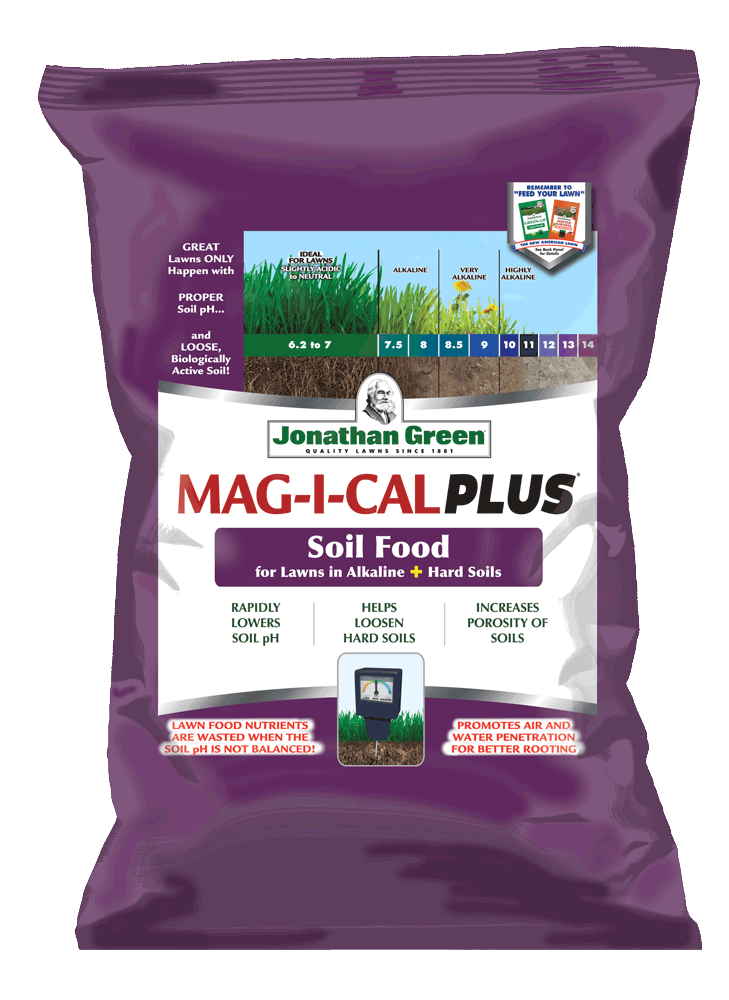How to Test Lawn Soil pH Level
Without the right soil pH, you are wasting between 20% and 70% of your lawn fertilizer nutrients. Learn how to properly test the pH level of your lawn soil from the experts at Jonathan Green.
Lush green lawns are our business at Jonathan Green. We are innovators and leaders in creating the finest quality grass seed and have been improving our genetically superior grass seed since 1881.
Importance of Soil pH
pH stands for potential hydrogen. It refers to the excessive amount of hydrogen ions that block exchange sites in the soil and prevent minerals and nutrients from being absorbed by the grass.
The pH level of the soil is vital to growing lush, green lawns. On a scale of 1 to 14, a pH of 1 is very acidic and a pH of 14 is very alkaline (or basic), while a pH reading of 7 is neutral. Lawns grow best in a soil that is slightly acidic to neutral (between 6.2 and a 7.0 on the pH scale).
Even small changes in pH reading can mean big changes for the lawn grass plant because the pH scale is logarithmic. This means that a pH reading of 5 is 1o times more acidic than a pH reading of 6 and 100 times more acidic than a pH reading of 7, and so on.
Soil Testing
A soil test kit will let you know if your soil has a low or high pH.
Jonathan Green’s easy-to-use Soil pH Test Kit for Lawns determines pH levels in just five minutes. The kit includes one test tube, one capsule of powder, and one pH range color chart to help you identify the results.
It is important to use either distilled water or rainwater when using this test kit in order to get accurate pH readings. Tap water has been pH-adjusted by municipal water authorities and will affect the reading.
Another great option is Jonathan Green’s Pro pH & Moisture Soil Tester, which accurately measures soil pH and moisture levels to within 0.2 pH and a 10% moisture level in just two minutes. This high-quality professional tool is used by sod growers, golf course superintendents, sports field managers, and landscapers to determine the right time to add fertilizer and lime.
How to Change Soil pH
Is the soil too acidic? Many people believe the best way to adjust it is to add granular, pulverized or pelletized limestone. However, it takes 50 pounds of limestone per 1,000 sq ft of lawn area to significantly increase soil pH, so this means 250 pounds to increase soil pH on a 5,000 sq ft lawn and 500 pounds on a 10,000 sq ft lawn.
A better alternative is one bag of Jonathan Green Mag-I-Cal® Plus for Lawns in Acidic & Hard Soil. One bag covers either 5,000 sq ft or 15,000 sq ft. This soil conditioner contains calcium, sulfur, and iron to naturally adjust the pH of the soil, while also loosening hard soil to increase absorption of nutrients and water.
If your soil is too alkaline (pH above 7.2), you will need to lower the pH. Jonathan Green’s Mag-I-Cal® Plus for Lawns in Alkaline & Hard Soil lowers the pH and loosens hard soils. The active ingredients are sulfur and calcium sulfate dihydrate which balances soil pH, is important for cell development, and is vital to many grass plant functions.
Mentioned Products
Many grass problems can be attributed to unhealthy soil. For more tips on how to test and adjust your lawn soil pH level, visit Jonathan Green online or visit your nearest independent retailer for reliable lawn and garden advice that will help you achieve great results with your lawn.



